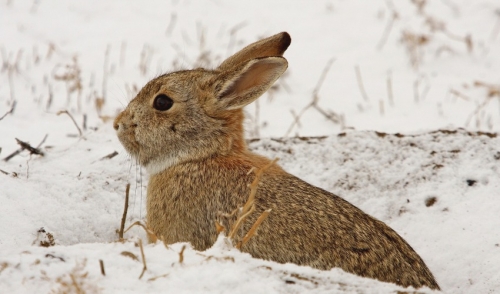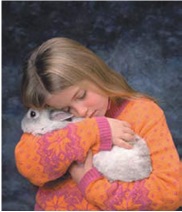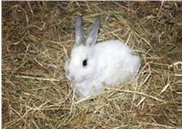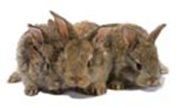
Tips for Preparing your Rabbit for the Cold Winter Weather
Can you believe it? Once again, winter is just around the bend. Take advantage of these beautiful autumn days to make preparations so that when Jack Frost makes an appearance, you’ll know your rabbits have everything they need to stay healthy and happy.



Sound Management
• Although a rabbit can eat more to help maintain body temperature, there are limits to how much food he can consume. That’s why warm, dry housing is so crucial during cold winter months.
• Fall is a good time of year to check for leaks in the roof of the hutch. Your hutch should have solid walls on at least three sides and a slanted overhanging roof that will allow rain and snow to run off.
• If you use tarps as windbreaks, repair or replace any tears or missing grommets.
• The more a rabbit eats, the more water it needs. Because water is so important, check your rabbit’s water source several times a day in cold weather to make sure it is clean and unfrozen.
• Glass water bottles can freeze and break, so autumn is a good time to transition to plastic or metal containers. (Changing your waterer now is far easier than changing bedding from a burst water bottle on a cold, snowy night.)
• If you opt for a heated waterer, clean it regularly to inhibit bacterial growth so that the water will be appealing to the rabbit. Be sure to keep the electrical cord out of reach so bunny can’t nibble.
• If you’re breeding rabbits, keep in mind that fertility decreases as daylight decreases. To maintain breeding consistency, keep the amount of light constant for 14 hours a day. One solution is to hang a 36-watt fluorescent tube light about six feet above the rabbits for every 55 square feet of floor space.
• Baby rabbits are not equipped to tolerate the cold, so provide extra warmth if needed. If you supplement the heat, monitor the temperature of the nest daily. If the nest gets too hot, the doe may refuse to nurse the litter. (A little heat goes a long way in a small nest box.)
Good Health
• Straw or bedding in the hutch provides extra warmth on cold autumn nights, but only if it’s clean and dry. Damp surroundings—whether from rain, snow, urine or a leaky water bottle—are an invitation to disaster. Dampness will contribute to chilling and immune stress that can easily progress to serious illness.
• Even in cold weather, rabbits need access to fresh air. Without good ventilation, they can be susceptible to respiratory diseases. An enclosed box inside a wire cage provides shelter against wind and rain while allowing for airflow.
Good Nutrition
• The colder it gets, the more calories rabbits must consume to stay warm—as much as three times normal. If your rabbit does not have access to adequate food, he will be hungry, cold, lose weight and get sick. He could even die of illness or hypothermia. One way to be sure your rabbit is getting adequate nutrition during cold weather months is to provide a complete feed such as Purina Mills® Rabbit Chow® Fibre3™.
